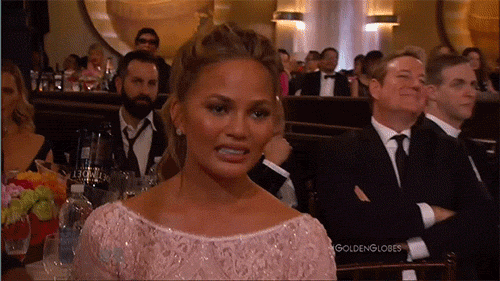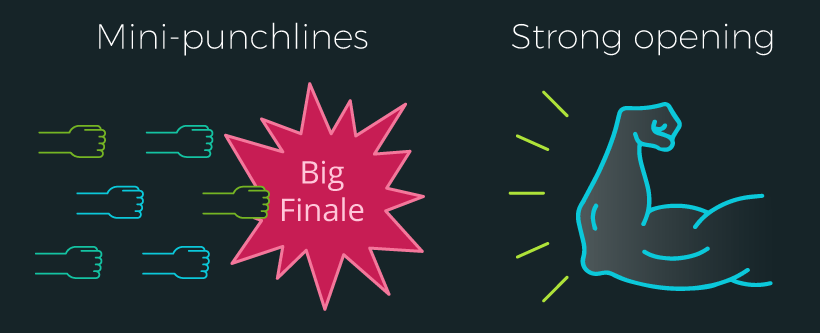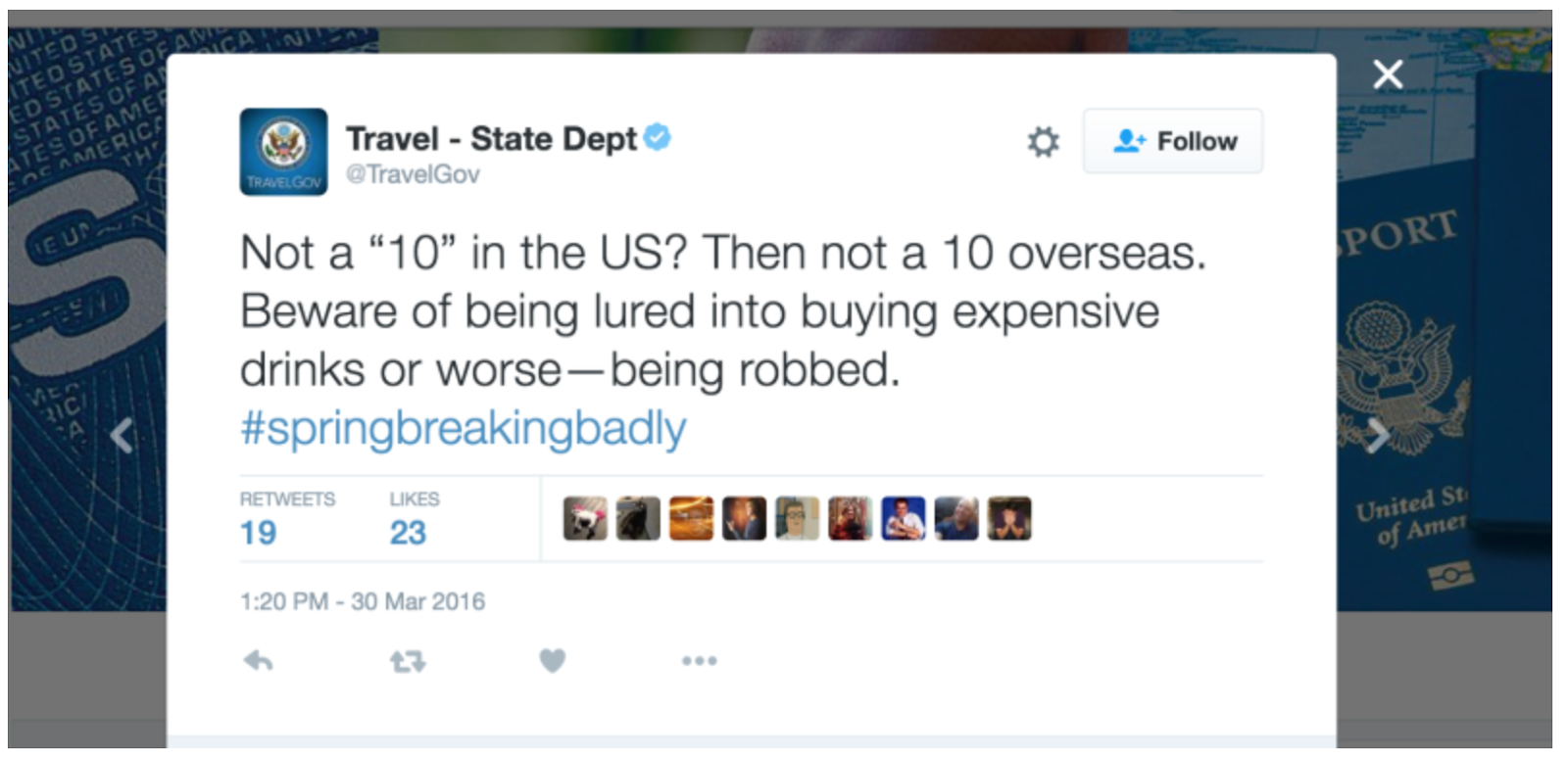If “content is king,” funny content marketing must be the supreme emperor. It’s clear that comedy sells, so it’s time for you to build funny content marketing into your strategy.
“Humor effects the brain differently than simple information does,” notes comedian Mike Albanese. “Funny content is more likely to be recalled than content that has no humor, and that is the point of most marketing and content!” Humor can also support brands in highly competitive or saturated industries, allowing them to stand out from similar brands simply by letting the brand’s personality shine.
But before you decide to go all in on a joke that’s likely to leave people feeling like this…
…read our do’s and don’ts first.
Do’s
1 – Know your audience
You might fall out of your chair laughing at a reference from ‘The Office’ (think “that’s what she said” comment à la Michael Scott), but will your audience of business professionals in their 50s and 60s find it equally side-splitting? Here’s the thing: They just might. But it’s up to you to decide in advance if they will.
How do you do this? Use customer insights and analytics to get to the core of who is viewing and engaging with your content, then decipher if humor is the right fit for your audience. Keep in mind you don’t have to “go hard” on it. Start with a few subtle humorous tweets, blog posts, or calls-to-action on your website and proceed from there.
2 – “Expose” yourself
No, we are NOT encouraging any PG-13 behavior, but peel back some of your brand’s layers. Some of the funniest people are those who practice what’s called “self-deprecating” humor, where they poke fun at themselves. Brands who have followed suit have struck gold.
The brands who have success with humor are authentic, honest, and true to their audience. “Leaving skin in the game includes a number of things — being vulnerable — making sure your content is vulnerable and a part of you,” notes Albanese. “They (your audience) are going to know when you are not doing the right thing or faking it.”
A great example of this is Charmin. Whether it’s their punchy ads, “pooptastic” sticker downloads, bathroom games, or their toilet paper wedding dress challenge, Charmin marketers have struck gold by shifting the focus of this commodotized product to exposing the actual use of toilet paper. They have essentially transformed the way marketers perceive them by using humor in their marketing.
3 – Take a risk
“It’s the duty of the comedian to find out where the line is drawn, and cross it deliberately,” said famed comedian George Carlin. By taking a risk (correction: a calculated risk, no joke is worth you getting banned from YouTube, or worse, your mom’s dinner table), you can connect with people more authentically.
The level of risk is not universal to each brand. Albanese says:
“It’s up to you for you to decide as marketers, as content writers, where the line is for your brand, for your product, and what you’re trying to do, and just step over that line. I think the best humor and comedy comes with going a little farther than you think you should go, and that’s where you’ll find the best piece of content and the best piece of humor for whatever you are doing.”
4 – Keep your audience’s interest
What’s worse than a bad joke? A long joke that has a punchline that isn’t even close to worth it. You might be thinking, “But punchlines are usually at the end, right?” Fear not! We are two steps ahead of you!
Below are two tactics that can help when weaving together a long, yet humorous story:
Mini-punchlines
So, your end goal isn’t for another whole ten minutes? Geez! Well, you need to make the journey fun. If your joke requires background, create mini-punchlines while leading up to the big finale. It keeps the story moving, provides necessary details, and keeps them laughing along the way.
Strong opening
If you know that you need to get through some content before a strong finish, butter up your audience by viewing your story as a meal. Think of your opening as the drink and appetizer portion, which is arguably just as important as the main course. Keep in mind that if your main entree is steak and lobster, your appetizer can’t be mini corn dogs (not saying that there’s not a time and place for mini corn dogs, just saying this isn’t the time and place).
Don’t give your audience Bud Light when they’re expecting champagne. Stick the landing and create a strong first impression that will leave your audience hungry for more.
Don’ts
1 – Hurt others for a laugh
“What do you mean don’t hurt others for a laugh, comedians do this all the time!” Well, there’s a big difference between what a comedian versus brand can get away with. So, if you’re embarking on a new journey of comedic content, test it out on some focus groups or even informally in the office before you unleash it to the public.
2 – Mess up the delivery
There are plenty of times when it’s clear that a brand has honorable intentions but still manages to miss the mark. A good example of this was when the U.S. State Department warned Americans that if they weren’t considered attractive in the U.S., they would still be seen as unattractive internationally.
The below tweet was (shockingly) not well received by followers.
(Screenshot from Gawker Article: The U.S. State Department Warns Americans That No One Could Possibly Find You Attractive)
So, yes, while everyone knows that this was simply a failed attempt at humor in which the State Department meant to encourage safe travel habits, they instead insulted the attractiveness of Americans. Way. To. Go.
3 – Don’t force it
Humor is always good, but don’t make it unnatural or exaggerated. “When you try to force something that’s out of your brand, outside your voice, where you can be unsuccessful is if you are not within your voice or forcing something,” remarks Albanese. “When you try exaggerating too much, it can become painfully obvious that you are trying too hard.”
Parting words
Remember the comedy dos of knowing your audience, understand your brand tone and personality, and being authentic, and you should have a good barometer of what you can and can’t get away with as a brand. A laugh is a gift that keeps on giving, so think of how you can incorporate comedic value into your future content.
Don’t be afraid to give comedy a shot. “Every industry has the chance to at the very least attempt to create content with humor,” notes Albanese. “The only negativity will truly come if you don’t at least try. If you decide it isn’t for you, who cares! At least you gave it a shot.”







